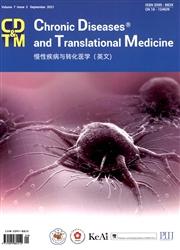Development and Initial Use of a New Inflammatory Bowel Disease Clinical Database Integrating Both Eastern and Western Clinical Characteristics
Abstract
Background
The increasing incidence of inflammatory bowel disease (IBD) presents significant medical and societal challenges. A well-designed IBD database is crucial for both epidemiological studies and clinical management. However, inconsistencies between regional databases hinder cross-institutional and international research, especially between Eastern and Western societies.
Methods
We developed a new IBD database, the 301 IBD database, integrating the IBD clinical characteristics from the Penn IBD database (USA) and the latest IBD guidelines and consensus and clinical practices of the Chinese PLA General Hospital (PLAGH). We applied this database to analyze clinical data of IBD inpatients at PLAGH from 2008 to 2023.
Results
The 301 IBD database contains 490 items in 6 sections including demographic characteristics, personal history, clinical phenotype, disease activity, laboratory tests and examinations, and treatment. Features of the 301 IBD database include inpatient focus, biochemical indicators and opportunistic infection focus, and more about ulcerative colitis (UC)-associated complications. Single-center analysis revealed an increasing hospitalization trend, from 2.35% in 2008 to 3.94% in 2023. We found that the clinical characteristics of our UC inpatients are predominantly male (62.5%), extensive lesions (55.1%), low usage of biologics (4.1%), and a high incidence of UC-CRC (3.0%). The clinical characteristics of CD inpatients included male predominance (68.39%), early onset age (35.43 ± 14.75-year-old), and high rate of surgery (25.81%).
Conclusion
The 301 IBD database, integrating Eastern and Western clinical data, provides a valuable tool for IBD clinical research. Future international, multicenter collaborations are expected to further enhance its utility.


 求助内容:
求助内容: 应助结果提醒方式:
应助结果提醒方式:


